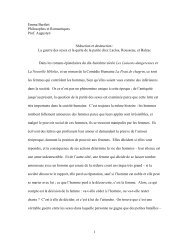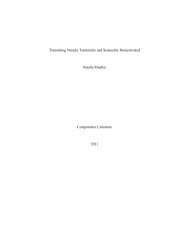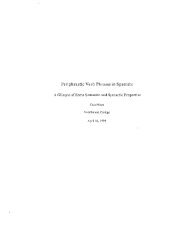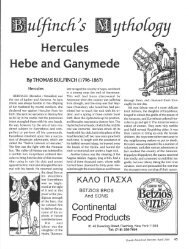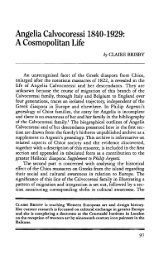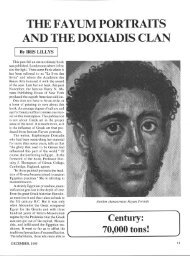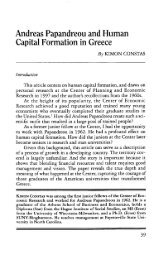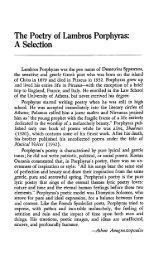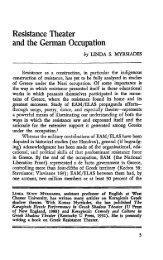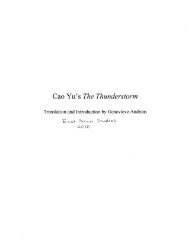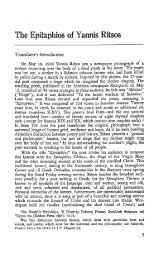Mythistorema - Triceratops Home
Mythistorema - Triceratops Home
Mythistorema - Triceratops Home
You also want an ePaper? Increase the reach of your titles
YUMPU automatically turns print PDFs into web optimized ePapers that Google loves.
74<br />
Just a little more<br />
Let us rise just a little higher.<br />
JOURNAL OF THE HELLENIC DIASPORA<br />
The almond trees herald the coming of the spring. The marble symbolizes<br />
the classical Greek tradition and the sea the inexhaustible source of love.<br />
After the voyages on "rotting sea-timbers," after the wandering in a<br />
wasteland where the pine trees are scorched, the cisterns empty and the<br />
people in distress, a faint hope appears, the prospect of a revival, an<br />
elevation and a happy voyage.<br />
In reference to this poem Kimon Friar writes: "At times, throughout<br />
all Seferis' poetry, there is a momentary glimpse of beauty . . . always<br />
the feeling that the next rise of land may show the breaking sea, the<br />
marble shining in the sun, the almond trees in blossom."" He implies,<br />
however, that this recurring hope is not realistic, since "the only assurance<br />
is to seek the dark serenity of the dead." This may be true on the personal<br />
level of the poem, that referring to the protagonist himself and his<br />
companions; in the next poem of <strong>Mythistorema</strong>, the last of the whole<br />
sequence, the protagonist mentions that he has reached the end and refers<br />
to himself and his companions as "the strengthless souls among the<br />
asphodels," as if they were dead and real life were irrevocably lost for<br />
them. However, he adds that, although dead, they can "teach peace" to<br />
those who will live in this country in the future. Thus, in contrast to the<br />
personal level, it seems that as far as the country is concerned the realization<br />
of the dream is not impossible, and those who follow will learn<br />
from the misfortunes of their ancestors.<br />
24<br />
Poem "24," the last of the <strong>Mythistorema</strong> sequence, starts with an<br />
identification of the "works of love" with the "works of the sea," implying,<br />
together with the lines which follow, that this modern Odyssey<br />
ends for the protagonist and his companions in the land of the dead,<br />
where they remain unable to finish the journey successfully, unlike<br />
<strong>Home</strong>r's Odysseus. The protagonist here, however, can assume the role<br />
played by Tiresias in the original Odyssey and show the way of return<br />
to "Those who one day shall live here where [he) ends}."<br />
The descent to the underworld is a recurring theme in Seferis' poetry."<br />
Hades is symbolic in this case, as the protagonist and his companions,<br />
"strengthless souls among the asphodels," feel dead while they are still<br />
in the land where others "one day shall live." But the ritual of sacrificing<br />
86Modern Greek Poetry, 69.<br />
"For instance, in "Mathios Pascalis among the Roses" and "Stratis the Sailor<br />
among the Agapanthi."



